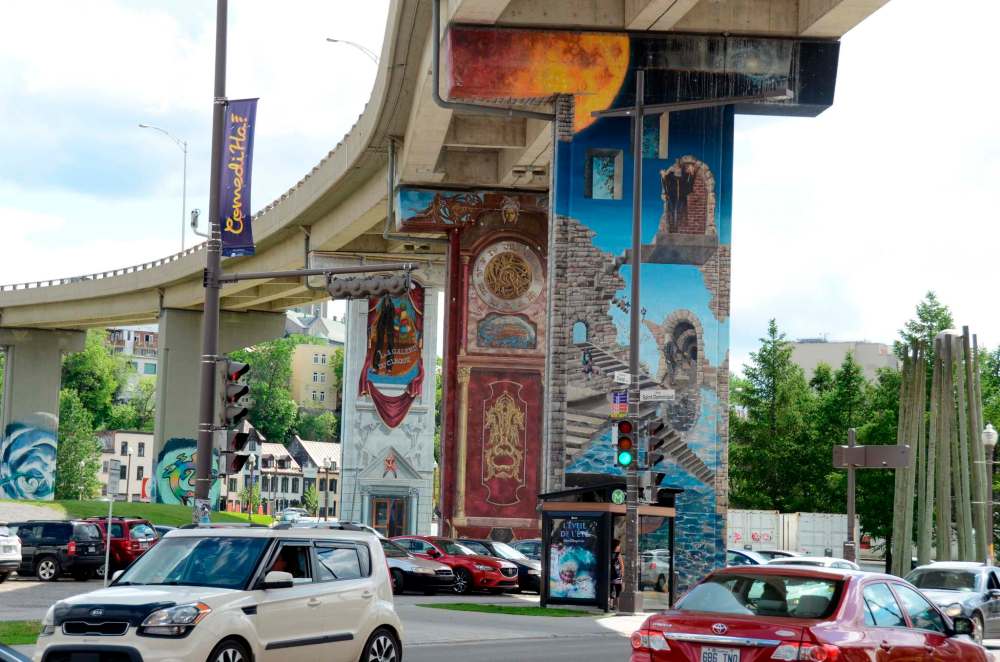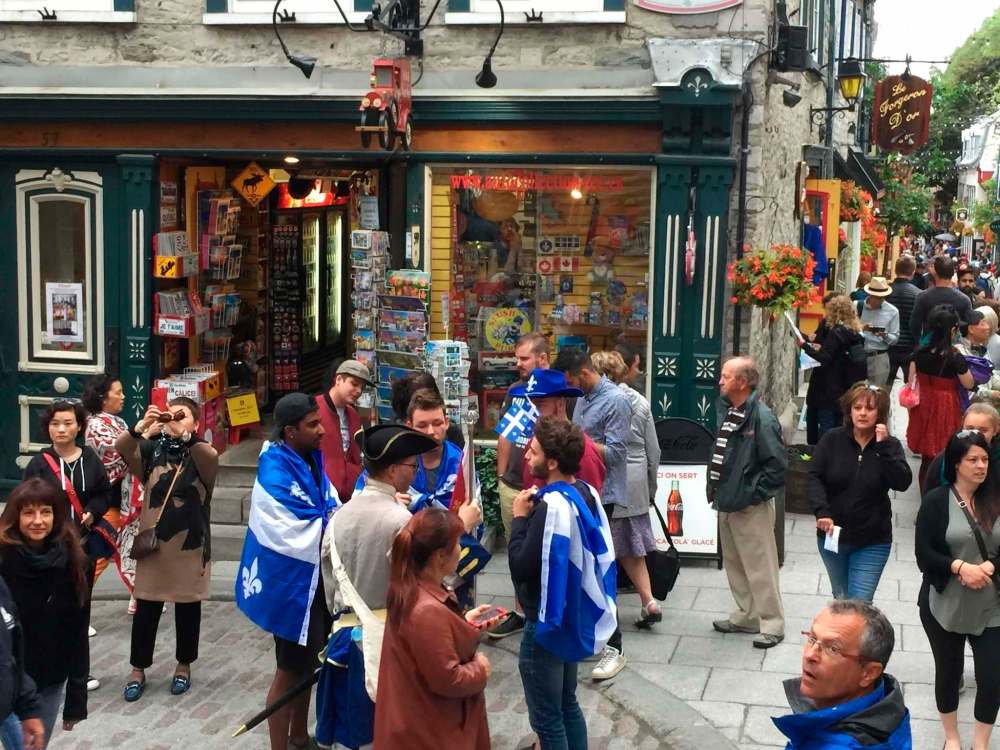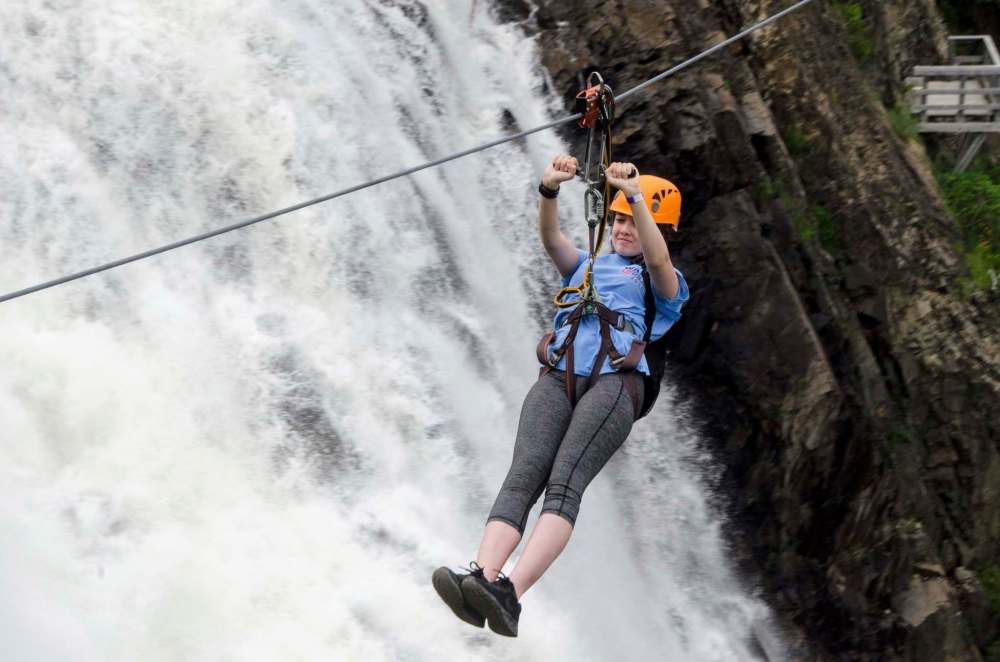Exploring Old Quebec
There's no shortage of things to do around the world heritage site
Advertisement
Read this article for free:
or
Already have an account? Log in here »
To continue reading, please subscribe:
Monthly Digital Subscription
$0 for the first 4 weeks*
- Enjoy unlimited reading on winnipegfreepress.com
- Read the E-Edition, our digital replica newspaper
- Access News Break, our award-winning app
- Play interactive puzzles
*No charge for 4 weeks then price increases to the regular rate of $19.00 plus GST every four weeks. Offer available to new and qualified returning subscribers only. Cancel any time.
Monthly Digital Subscription
$4.75/week*
- Enjoy unlimited reading on winnipegfreepress.com
- Read the E-Edition, our digital replica newspaper
- Access News Break, our award-winning app
- Play interactive puzzles
*Billed as $19 plus GST every four weeks. Cancel any time.
To continue reading, please subscribe:
Add Free Press access to your Brandon Sun subscription for only an additional
$1 for the first 4 weeks*
*Your next subscription payment will increase by $1.00 and you will be charged $16.99 plus GST for four weeks. After four weeks, your payment will increase to $23.99 plus GST every four weeks.
Read unlimited articles for free today:
or
Already have an account? Log in here »
Hey there, time traveller!
This article was published 08/09/2018 (2632 days ago), so information in it may no longer be current.
QUEBEC — It’s what’s inside the historic wall of Quebec City that makes people want to visit. It’s what’s outside that makes people want to stay.
To visit without venturing outside the 17th-century fortification is to miss the outdoor concerts, vistas and history of the hilltop Plains of Abraham, the up-and-coming Limoilou neighbourhood where young chefs ply their trade and acrobats learn their craft, or the buzz of Saint-Roch district just outside Old Quebec. On the outskirts, higher-than-Niagara Montmorency Falls roar from a cliff where zip liners screech across the canyon.
It’s a diverse tableau of communities, architecture, public markets, museums and nature, much of it accessible by foot from Old Quebec and all of it stitched together by the city’s extensive network of bicycle trails or a quick drive.

Bargains in accommodations are another draw: on a visit at the height of the summer tourism season, I stayed at Hotel Royal William, an old, comfortable hotel in the Saint-Roch district, for barely $100. Royal William and the more upscale Hotel Pur nearby are an engaging 15-minute walk to Old Quebec along shops, cobblestone alleys and restaurants.
The capital of New France until its conquest by the British in 1759, Old Quebec is recognized by UNESCO as a world heritage site, hailed by the United Nations organization as “a remarkable example of a fortified colonial town, and unique north of Mexico.”
The heritage site encompasses the walled Upper Town, overlooked by the commanding Fairmont Le Chateau Frontenac Hotel, and Lower Town, where the explorer Samuel de Champlain put ashore with a few dozen men in 1608. Today, the Place Royale district in Lower Town remains so French in character and appearance that its courtyard and 17th-century church, Notre-Dame-des-Victoires, stood in for France in Steven Spielberg’s 2002 film, Catch Me If You Can.
There’s plenty to absorb in Old Quebec but there are also inviting places beyond. “If you’re staying for three days, basically you would have gone through Old Quebec and its next neighbourhoods, like Lower Town and the Old Port,” says Paule Bergeron, an executive with Quebec City and region tourism. “Then you have the chance to go visit other neighbourhoods.”
A sampling:

MONTMORENCY FALLS
This beehive of outdoor activity gets the adrenalin going one way or another. Try the zigzag staircase with 487 steps up the cliff, or take the cable car. At 83 metres — 30 metres higher (though far narrower) than Niagara Falls — Montmorency offers a suspension footbridge over the falls, via feratta climbing and a dual zip line that is riveting to watch and another level of excitement to do. The zip line comes with a bonus: download a free app on the site and you’ll come away with a panoramic and close-up video mashup of you sweeping in front of the crest of the falls, very, very far up.
In winter, frozen spray forms Sugar Loaf, a huge cone of ice at the foot of the falls, all illuminated at night. Ice climbers scale cliffs framing the waterfall. Getting there: A bicycle ride of just over 13 kilometres, almost all on dedicated bike paths; 20 minutes by car; or by bus. When: The park is accessible year-round. Cable car is year-round except Jan. 7-25 and March 9-April 14. The zip line for this season ends Oct. 8, reopens in spring.
THE MONTCALM ARTS DISTRICT
Quebec and international art are the draw at Musée national des beaux-arts du Québec in this high-elevation neighbourhood, named for the French general whose forces were overcome by British invaders on the Plains of Abraham. On the plains, free and ticketed concerts roll through the summer, including an 11-day festival in July that is one of Canada’s largest outdoor music events. It’s a neighbourhood distinguished by galleries, bookstores, urban terraces for pub-crawling and streetlamps decorated with reproduced works from the art museum.
Getting there: A 20-minute walk from Chateau Frontenac, the towering landmark of the walled city. When: Year-round, with the concert season geared to summer.
OLD PORT and the PROMENADE SAMUEL-DE-CHAMPLAIN
The promenade is a riverfront section of a bicycle and walking path that extends nearly 50 km from the Quebec City bridges on the west to Montmorency Falls. It takes in stunning views of the waterfront and cliffs, the sprawling Old Port farmers market and grain silos that are transformed at night into light sculptures with colours of the aurora borealis. How to get there: Right outside Lower Town. When: Year-round, bicycling as deep into winter as you can stand the cold. The Old Port market is open each day year-round but expected to close in the spring to make way for a new market in the Limoilou district. A smaller farmers market will take its place near Place Royale.

LIMOILOU
The Old Port’s loss will be Limoilou’s gain when the city’s premier farmers market opens under a glass roof next year. Limoilou has the undercurrent of a rising neighbourhood, with cafés, restaurants and shops moving in; a major concert venue (featuring Paul McCartney in September); and an old church that has been converted into a school for acrobatics and the circus — a tradition in the province that is the birthplace of Cirque du Soleil. Getting there: A half-hour walk from the centre of Old Quebec or 10-minute bike ride. When: Year-round.
SAINT-ROCH
Highway overpasses are not normally so absorbing. Entering the Saint-Roch district from the Old Port, the visitor comes across concrete highway pillars turned over to street artists, a project designed to beautify a utilitarian stretch of the city and give graffiti artists an outlet for their creations. The results, at their best, rival the masterpiece frescoes and murals of Lower Town. Staying in Saint-Roch, a hub of nightlife, means a short but steep walk up a snaking stairway in the cliff to bustling Rue St-Paul and Upper Town. Alternatively, the Faubourg elevator adjacent to the stairs, nestled in the corner of a tiny café selling pecan tarts and coffee, offers a free ride to the heights.
The British invaders who scaled Quebec City’s forbidding cliffs would have had a much easier time of it if they could have stopped for tarts and a lift.
Getting there: A 10- to 20-minute walk, aerobic even with the elevator. Buses serve the neighbourhood and cyclists can cruise down to the waterfront to get to Lower Town or suck it up on the hill. When: Year-round.
— The Associated Press



